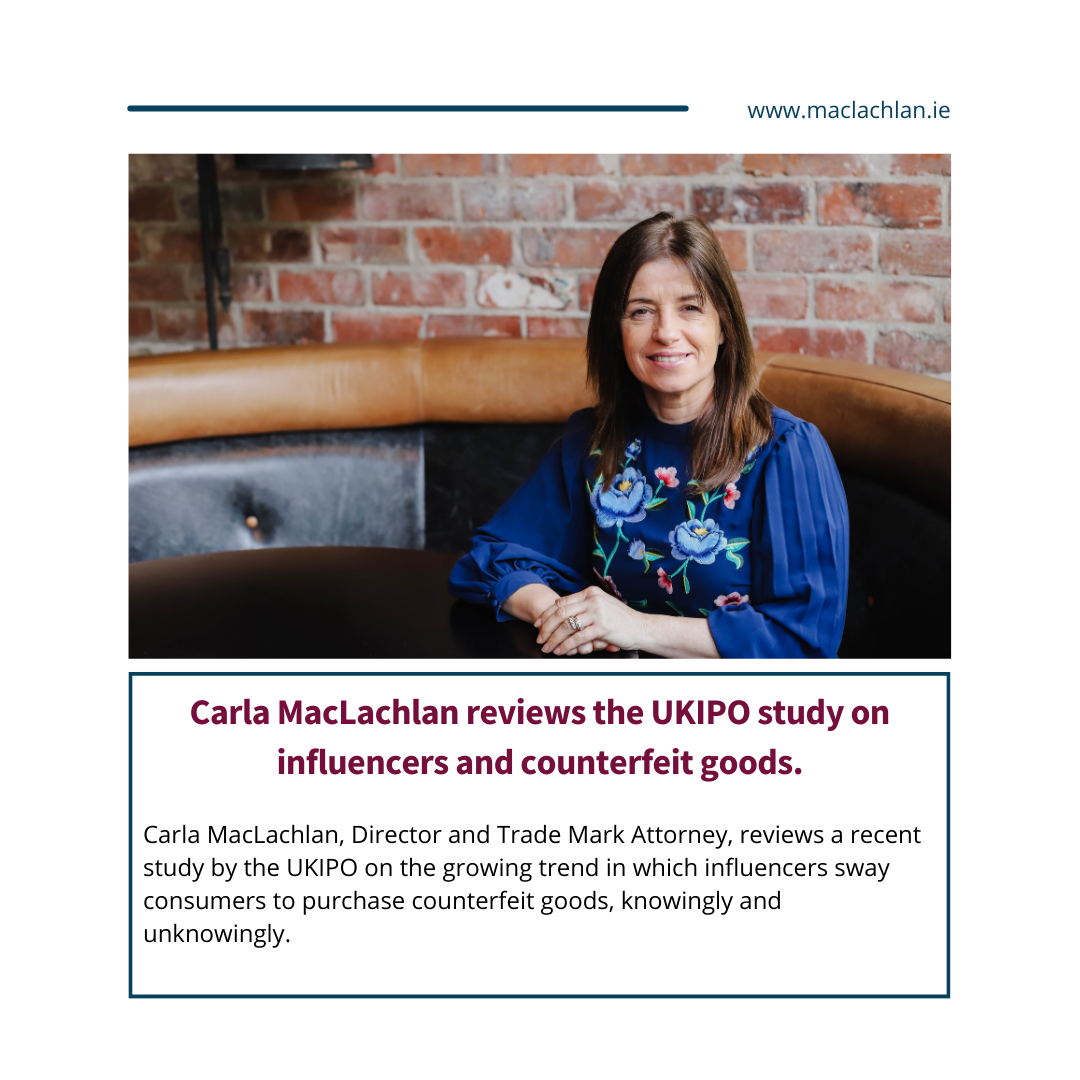The UKIPO commissioned a study on ‘The impact of complicit social media influencers on male consumption of counterfeit goods in the UK’ and discovered some interesting things.
A fairly recent trend is the increasing role influencers play in persuading the public to purchase a large range of goods. Influencers are trusted partners and work their magic on Instagram and other platforms to encourage their followers to purchase whatever it is they are promoting on any given day. Some complicit influencers have gone a step too far and are promoting illicit wares and are assuring their followers that purchasing these counterfeit goods is acceptable.
A similar study was conducted in 2021 but focused on female consumers aged between 16 and 60. That study on females disclosed that social media “prompted” 10% of the population studied to knowingly purchase counterfeit goods, with 4% unknowingly doing so. In this recent study the research concentrated on men in the same age bracket and discovered that 24% of the men studied knowingly purchased counterfeit goods which had been endorsed by social media influencers and a further 6% unknowingly did so. This is a large increase in the few years between the two studies and highlights that men are as keen to buy wares as woman (if not more so).
The key findings of the study as stated by the UKIPO are as follows;
Impact of social media influencers
- 31% of UK male participants aged 16 to 60 are influenced by SM endorsements in their purchases of counterfeits
- 7% are counterfeit hunters who use the SM postings to assist in their searches
- 24% are prompted by SM endorsements to buy counterfeits
- 18% are knowing responders who are aware the products are counterfeit
- 6% are deceived responders who are unaware the products are counterfeit
Factors influencing purchasing decisions
- four key factors influence counterfeit purchasing decisions: trusted others including complicit influencers, rationalisations, risk blindness and risk appetite
- widespread definition confusion over the meaning of ‘counterfeit’ is a type of rationalisation that fuels demand
- younger generations are much more susceptible to the influence of SM personalities, are more likely to construct rationalisations to justify illicit purchases, are the most confused about the meaning of ‘counterfeit’, have a lower risk perception and have a higher risk appetite
In the past counterfeit goods were only available in the side streets of towns and villages but now with social media and the Internet it is possible to buy anything at any time. This has been a great asset for many legitimate businesses but of course there are downsides to everything and here we see that social media and the Internet have allowed the widespread sale of counterfeit goods that are sometimes harmful to the individuals themselves (in the case of pharmaceutical goods etc ) and harmful to all those businesses that are being copied.
The question is how to prevent these illegal sales.
The UKIPO has some recommendations as follow;
Five policy implications arise from the research.
- Policies aimed at reducing the demand for counterfeit products should prioritise younger, habitual consumers of counterfeits.
- Educational approaches should focus on the influence of trusted others, risk blindness, risk appetite and rationalisations.
- Industry and regulators need to develop and broadly communicate a coherent definition of ‘counterfeit’, clearly associating it with immoral wrong, and investing its meaning with real risks and harms.
- Educating the younger age group about the safety risks of counterfeits should be a high priority, particularly in relation to specific product groups such as beauty/grooming/hygiene, electrical and alcohol.
- Regulators and brand owners should engage with social media platforms, online marketplaces, and especially the influencer marketing industry to tackle deviant SM influencers and disrupt the purchasing pathways. This would also identify any gaps in the regulatory framework that may need to be addressed in order to make the companies accountable for facilitating SM influencers who advertise counterfeits.
- As part of an ongoing risk assessment strategy, brand owners should canvas SM platforms and online marketplaces to identify complicit SM influencers and institute strategies to mitigate the risks they pose.
In my opinion education could be key to changing these trends. When we look at some of the campaigns around anti-smoking and others, the impact was very effective. Such a campaign, focused on counterfeit goods and the societal effects of the sale of these goods, could change public perception. It is entirely possible that influencers and their followers do not always have a clear picture of the impact sales of counterfeit goods have on society.
If you are a brand owner and you notice a third party copying your products it is important to act fast to prevent such use.
The statistics and recommendations are all found in this UKIPO publication and you can read further detail here: https://www.gov.uk/government/publications/social-media-influencers-and-counterfeit-goods-wave-2/the-impact-of-complicit-social-media-influencers-on-males-consumption-of-counterfeit-goods-in-the-uk
Carla MacLachlan, Director and Trade Mark Attorney.


